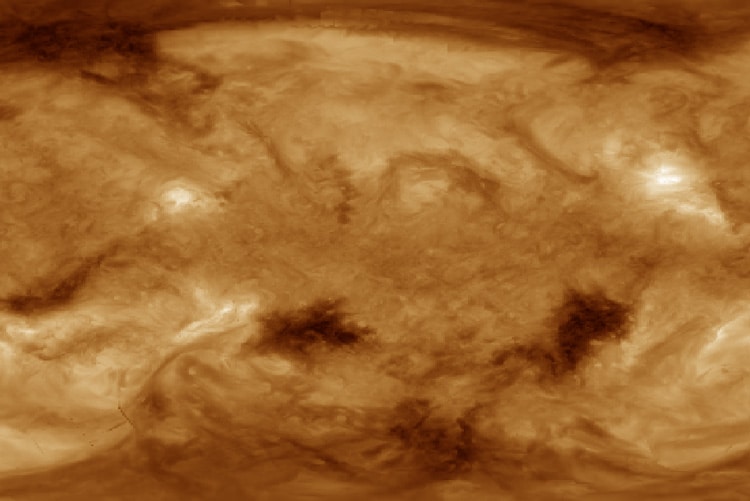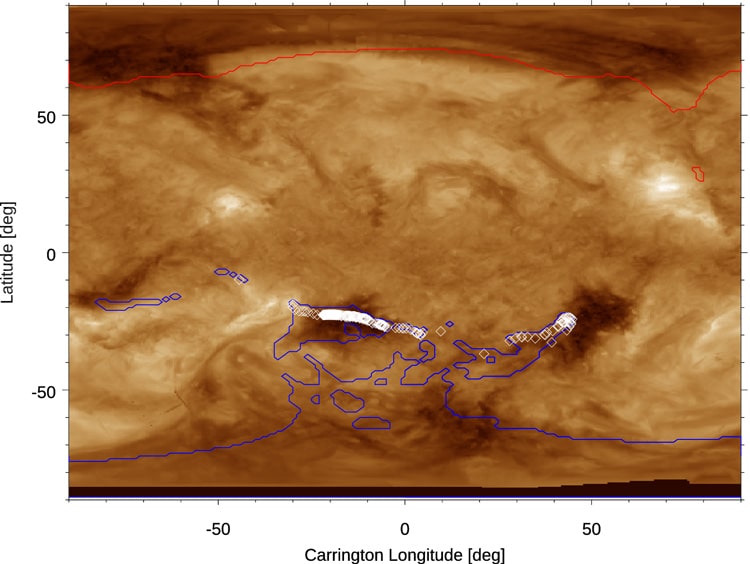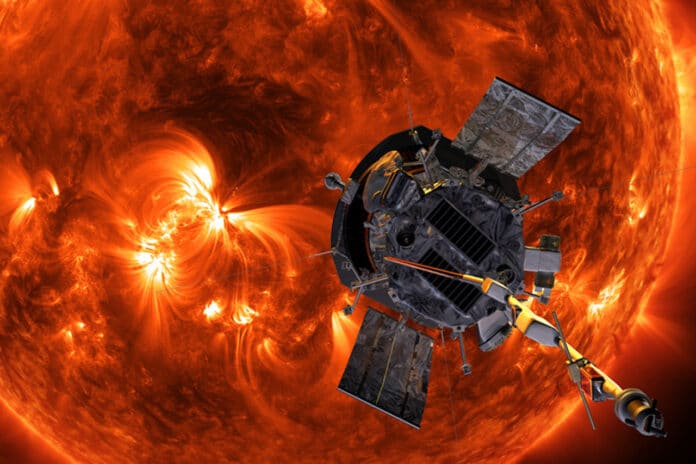The fast solar wind that fills the heliosphere originates from deep within regions of open magnetic field on the Sun called ‘coronal holes.’ The energy source responsible for accelerating the plasma is widely debated; however, there is evidence that it is ultimately magnetic, with candidate mechanisms including wave heating and interchange reconnection.
In a new study, a team of scientists reports measurements of fast solar wind streams from the Parker Solar Probe that offer strong evidence for the interchange reconnection mechanism. Features are lost as the solar wind leaves the corona as a homogeneous jet of charged particles. NASA’s Parker Solar Probe has flown close enough to the Sun to detect the fine structure of the solar wind close to where it is formed at the Sun’s surface.
It’s like seeing jets of water emanating from a showerhead through the blast of water hitting you in the face.
The coronal holes, according to the team’s analysis, resemble showerheads, with relatively evenly distributed jets erupting from bright regions where magnetic field lines funnel into and out of the Sun’s surface. The researchers contend that charged particles are launched out of the Sun when magnetic fields with opposite directions pass one another in these funnels, which can be 18,000 miles across.

The researchers conclude that the solar wind could only be produced by this phenomenon, which is known as magnetic reconnection, based on the presence of some highly high-energy particles that the Parker Solar Probe has discovered — particles traveling 10 to 100 times faster than the solar wind average. The primary goal of the probe’s 2018 launch was to settle a debate between the competing theories of magnetic reconnection and plasma- or Alfvén-wave-accelerated acceleration as the source of the high-energy particles that make up the solar wind.

Stuart D. Bale, a professor of physics at the University of California, Berkeley, said, “The big conclusion is that it’s magnetic reconnection within these funnel structures that are providing the energy source of the fast solar wind. It doesn’t just come from everywhere in a coronal hole; it’s substructured within coronal holes to these supergranulation cells. It comes from these little bundles of magnetic energy that are associated with convection flows. Our results, we think, are strong evidence that it’s reconnection that’s doing that.”
Journal Reference:
- Bale, S.D., Drake, J.F., McManus, M.D. et al. Interchange reconnection is the source of the fast solar wind within coronal holes. Nature 618, 252–256 (2023). DOI: 10.1038/s41586-023-05955-3
